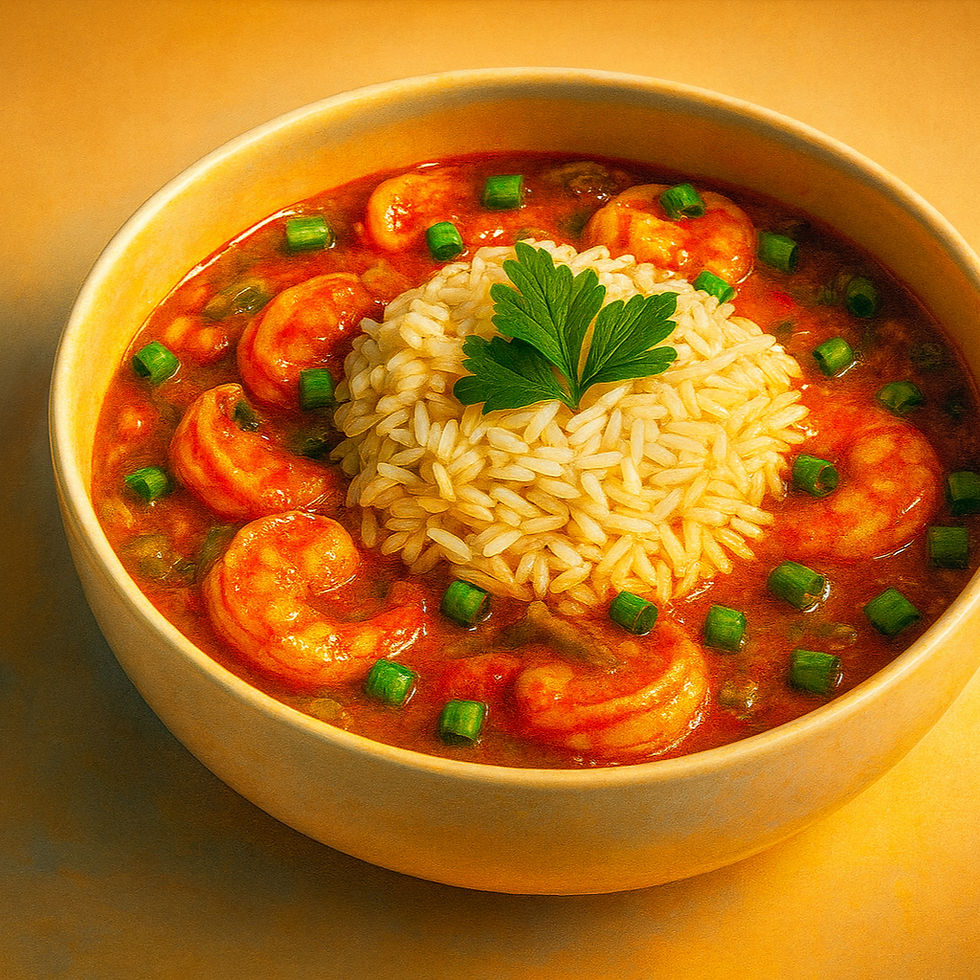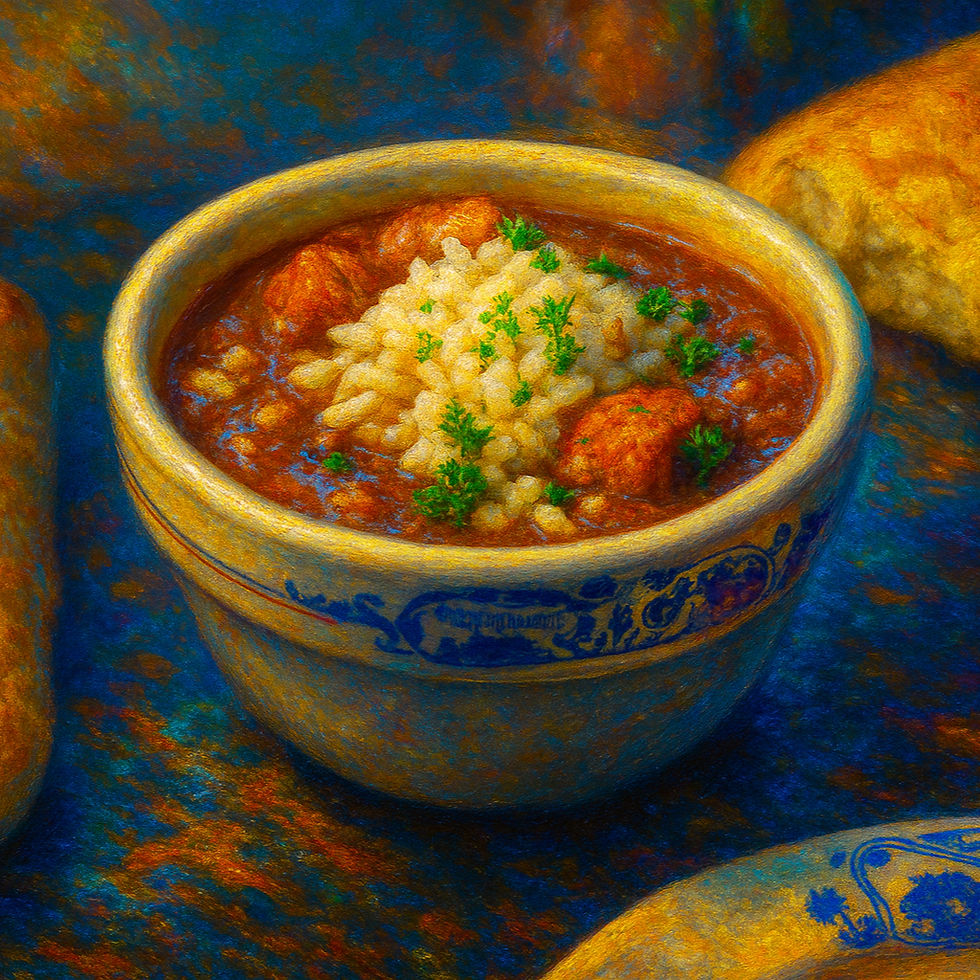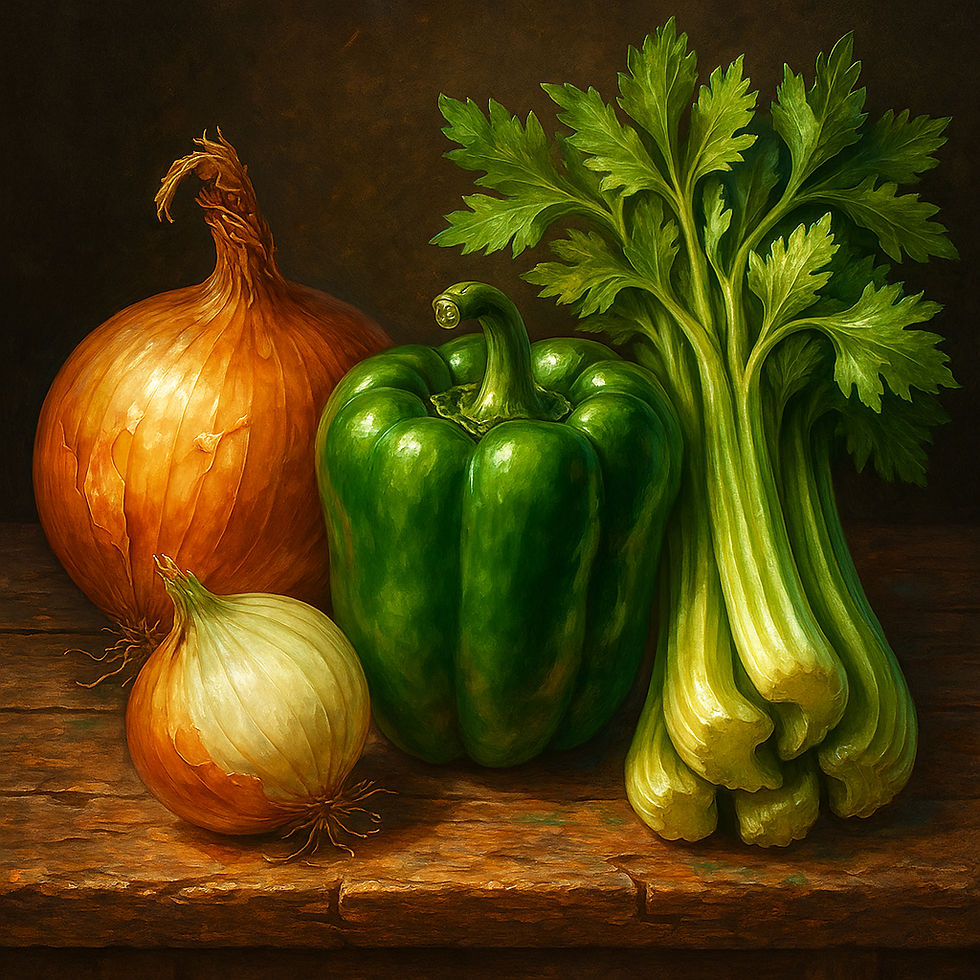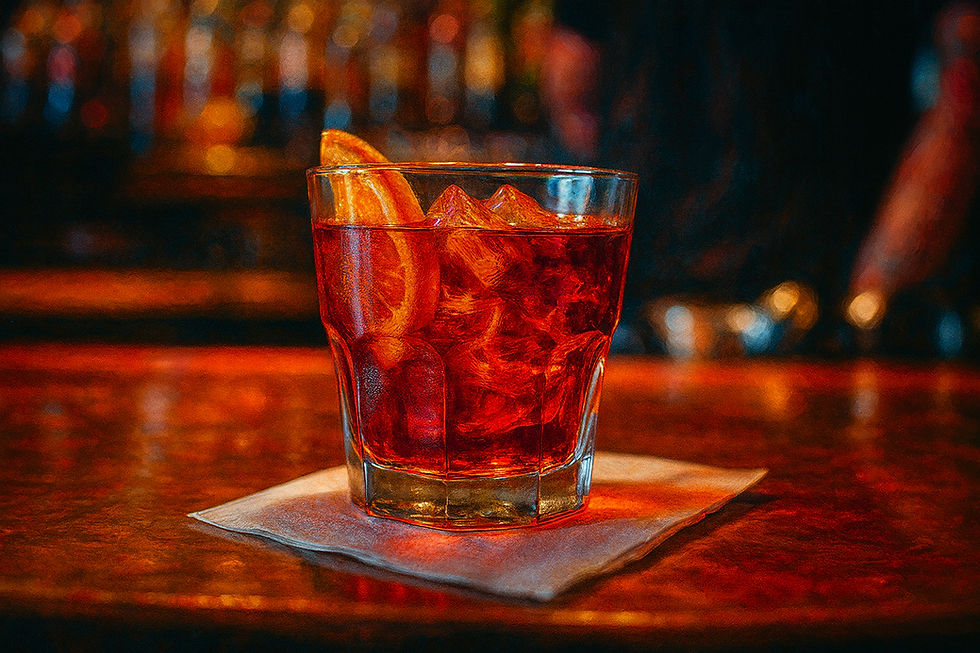The Influence of Creole & Cajun Cuisine
- Laura Kuhn

- Aug 12
- 2 min read

In New Orleans, food isn’t just fuel—it’s a love language, a cultural passport, and sometimes, a point of friendly (and delicious) debate. Two of the most celebrated culinary traditions here—Creole and Cajun—share deep Louisiana roots, but each tells its own story through spices, cooking methods, and heritage. Together, they shape the flavors that define our city and inspire the food floats in the Krewe of Les Bon Temps Rouler’s "All Things New Orleans" parade.
Creole Cuisine: The City’s Cultural Gumbo
Creole cooking blossomed in the melting pot of New Orleans, influenced by French, Spanish, West African, Caribbean, and Native American traditions—later with German and Italian touches. Often thought of as “city food,” Creole cuisine leans into rich sauces, elegant presentation, and ingredients that were once considered luxuries.

Signature dishes include:
Shrimp Creole – A tomato-based, spiced stew served over rice.
Oysters Rockefeller – A decadent baked oyster dish from Antoine’s.
Bananas Foster – The flaming dessert made famous at Brennan’s.
Creole dishes often use butter, cream, tomatoes, and a broader variety of seafood, reflecting the city’s access to global imports through the port of New Orleans.
Cajun Cuisine: The Flavor of the Countryside
Cajun cooking traces back to the Acadians—French Canadians exiled to Louisiana in the 18th century—who settled in rural areas and learned to make the most of local ingredients. Often called “country cooking,” Cajun food is hearty, rustic, and built on layers of flavor developed through slow cooking.

Signature dishes include:
Gumbo – Dark roux, sausage, chicken or seafood, and the holy trinity (onions, bell peppers, celery).
Jambalaya – A one-pot rice dish with meat, seafood, and bold spices.
Crawfish Étouffée – Crawfish tails smothered in a rich, seasoned gravy.
Cajun cooking favors smoked meats, game, freshwater fish, and spices that bring warmth without overpowering.

Similar, But Not the Same
While Creole and Cajun cuisines share the “holy trinity” base and love of spice, they diverge in tone. Creole cuisine is more cosmopolitan, Cajun more rustic. Creole often uses tomatoes—Cajun usually doesn’t. Creole gumbos might have shrimp and crab; Cajun gumbos might feature smoked andouille and duck.
Think of them as two branches on the same delicious family tree—distinct, but both essential to Louisiana’s culinary identity.
Why They Matter in New Orleans Culture
These two styles of cooking are more than just recipes—they’re expressions of history, resilience, and community. Whether it’s a Creole chef in the Quarter serving a refined seafood dish or a Cajun family boiling crawfish in the backyard, the food tells a story about the people who made it.
And when our parade rolls, don’t be surprised if you see a float dedicated to gumbo pots, crawfish boils, or a flaming Bananas Foster—because in New Orleans, we don’t just eat our history, we celebrate it.








Comments